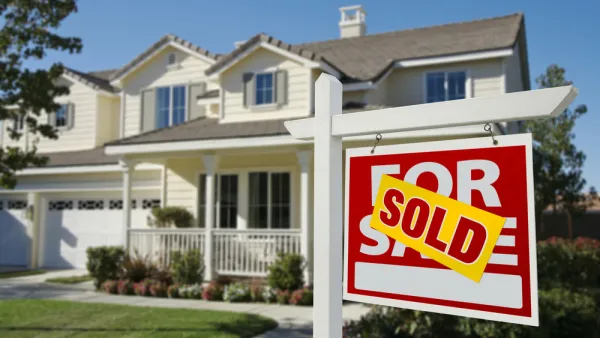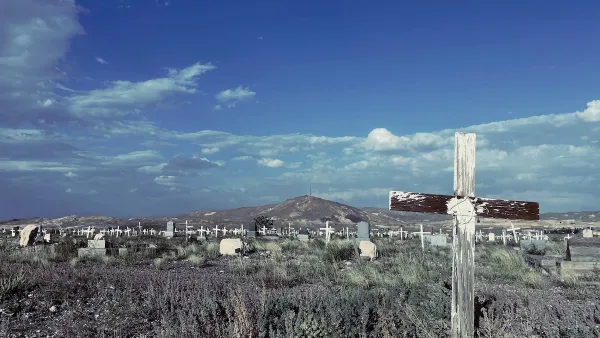Homeownership is often promoted as a way for low-income and minority families to build wealth. But it is those very families who assume the most risk in buying a house.

Joe Cortright employs data from the aftermath of the housing bubble to demonstrate how, for low-income and non-white households, "home ownership could turn out to be a wealth-destroying, not a wealth-building, proposition."
He writes in City Observatory:
"Housing can be a good investment if you buy at the right time, buy in the right place, get a fair deal on financing, and aren’t excessively vulnerable to market swings. Unfortunately, the market for home-ownership is structured in such a way as to assure that low-income and minority buyers meet none of these conditions."
In a national housing market still informed by its history of racism, here's how each of those variables works against non-white and low-income households:
1. Timing.
"The best time to buy, from a wealth-building perspective, is when housing prices are low and growing sluggishly. But generally, such times coincide with limited credit availability … Only the 'best' borrowers have access to home loans when prices are low."
2. Location, location, location.
"In segregated housing markets, the behavior of whites to avoid Black and Hispanic neighborhoods means that it's much more difficult for those communities to see consistently rising home values." As a result, "ethnic minorities tend to buy in neighborhoods that have lower rates of home price appreciation."
3. Access to credit.
"The evidence is that low-income borrowers and ethnic minorities pay, on average, higher interest rates." And of course, "if you pay more for your mortgage, that raises the cost and lowers the returns to homeownership."
4. Economic resilience.
"Low income and minority families often have limited financial resources beyond the equity in their homes and therefore are poorly positioned to cope with financial setbacks—loss of a job, a major medical expense or home repair—and missing mortgage payments can quickly push them into default."
City Observatory follows this analysis with more on how an anti-poverty strategy built on promoting homeownership can actually worsen inequality, and its implications for affordable housing.
FULL STORY: Homeownership: A failed wealth-creation strategy

Analysis: Cybertruck Fatality Rate Far Exceeds That of Ford Pinto
The Tesla Cybertruck was recalled seven times last year.

National Parks Layoffs Will Cause Communities to Lose Billions
Thousands of essential park workers were laid off this week, just before the busy spring break season.

Retro-silient?: America’s First “Eco-burb,” The Woodlands Turns 50
A master-planned community north of Houston offers lessons on green infrastructure and resilient design, but falls short of its founder’s lofty affordability and walkability goals.

Test News Post 1
This is a summary

Analysis: Cybertruck Fatality Rate Far Exceeds That of Ford Pinto
The Tesla Cybertruck was recalled seven times last year.

Test News Headline 46
Test for the image on the front page.
Urban Design for Planners 1: Software Tools
This six-course series explores essential urban design concepts using open source software and equips planners with the tools they need to participate fully in the urban design process.
Planning for Universal Design
Learn the tools for implementing Universal Design in planning regulations.
EMC Planning Group, Inc.
Planetizen
Planetizen
Mpact (formerly Rail~Volution)
Great Falls Development Authority, Inc.
HUDs Office of Policy Development and Research
NYU Wagner Graduate School of Public Service




























